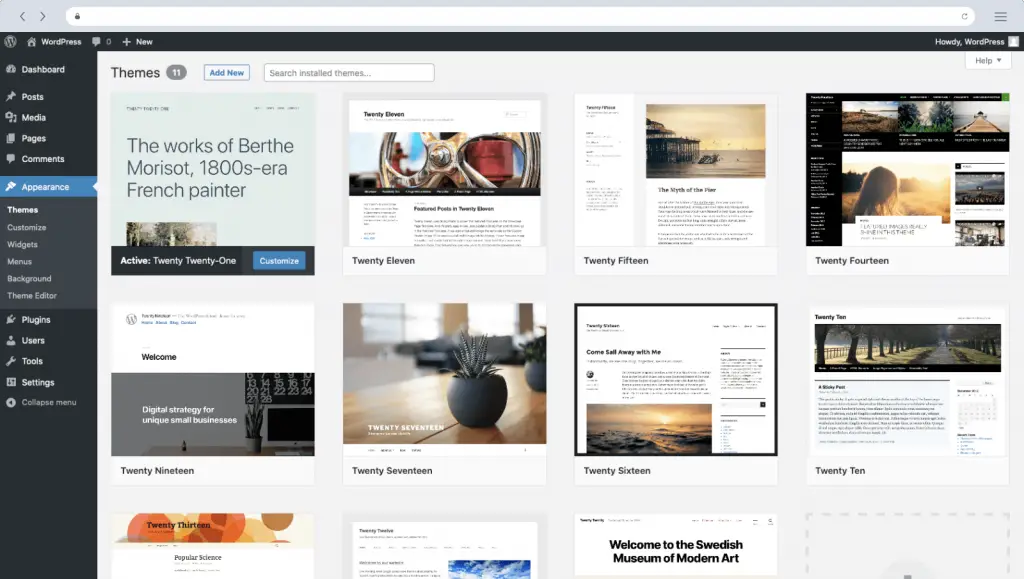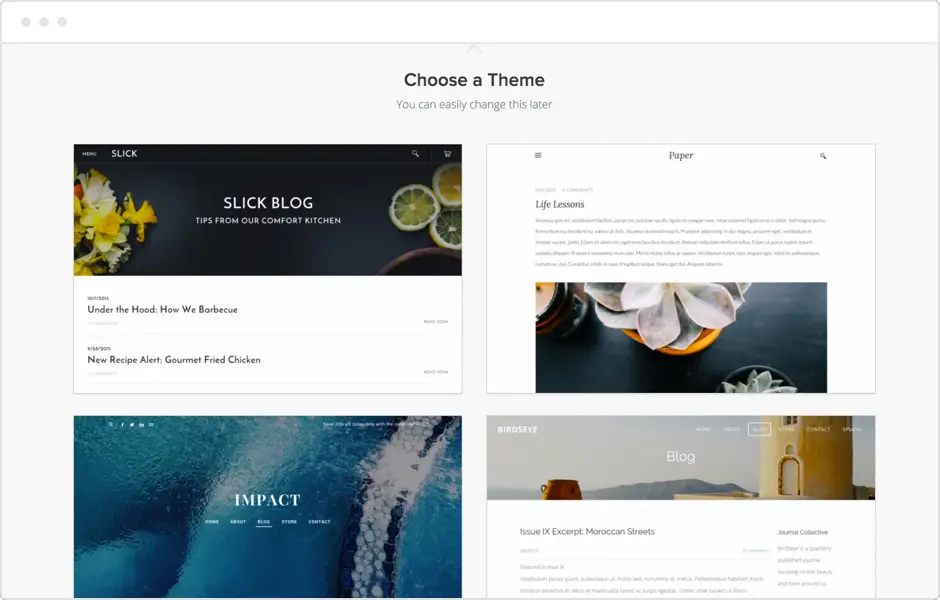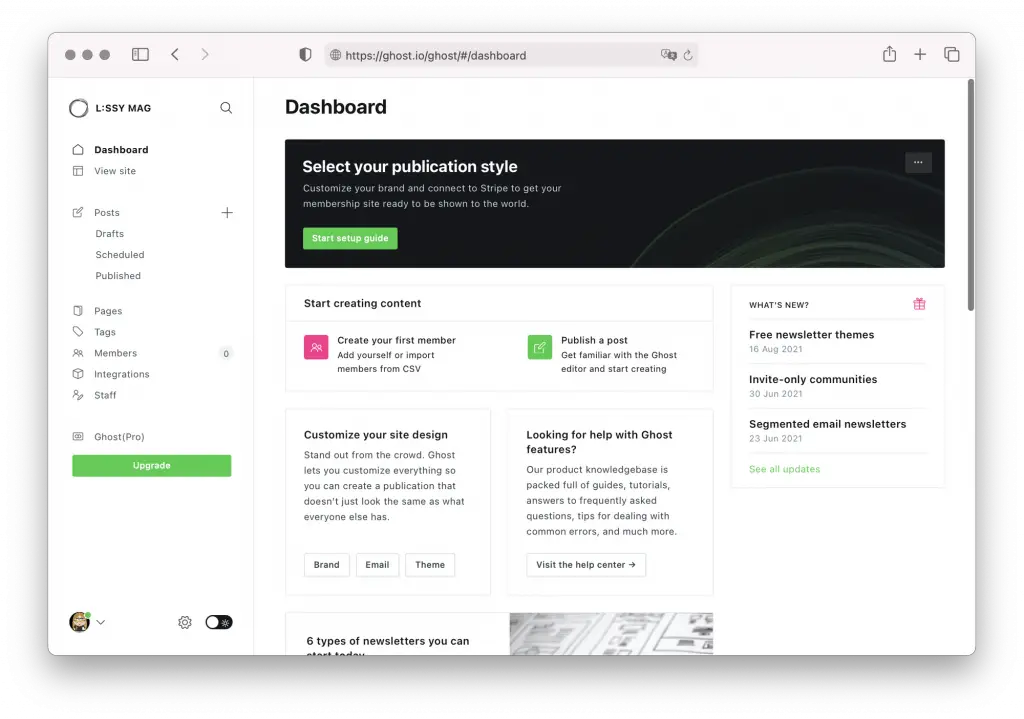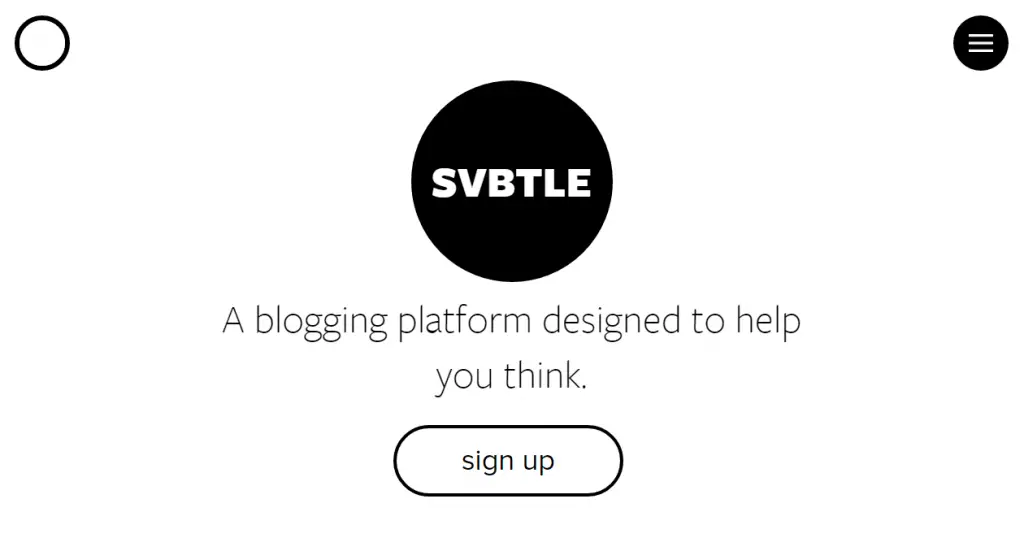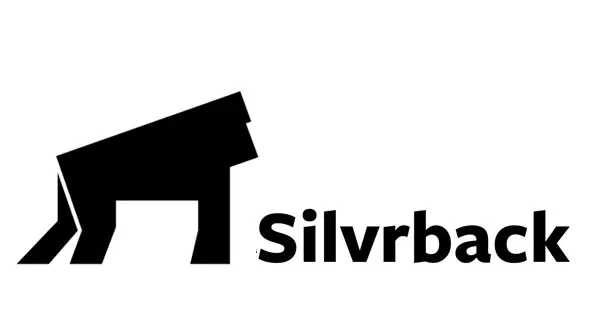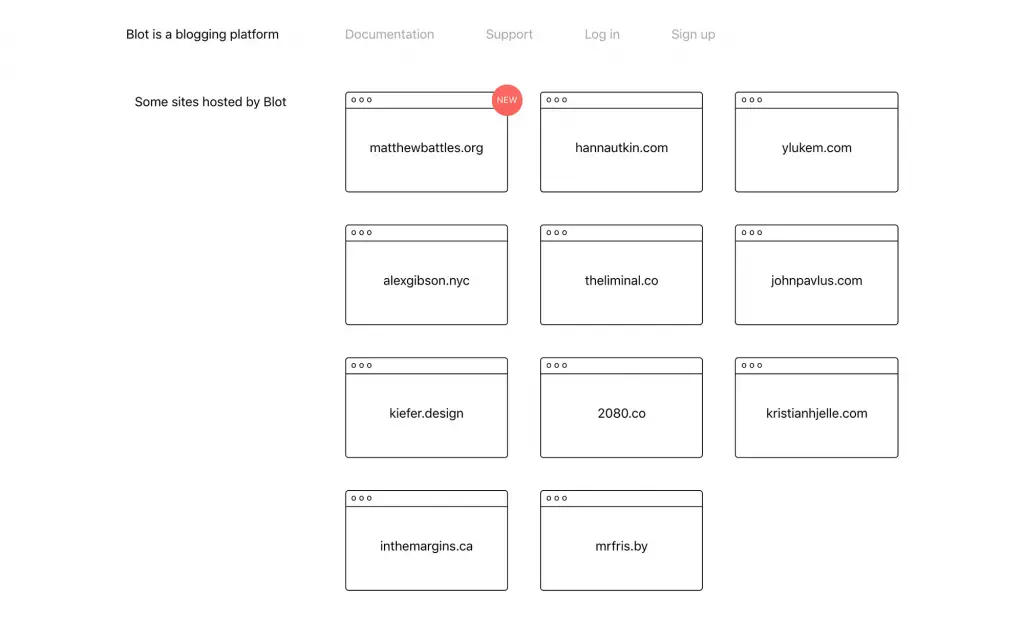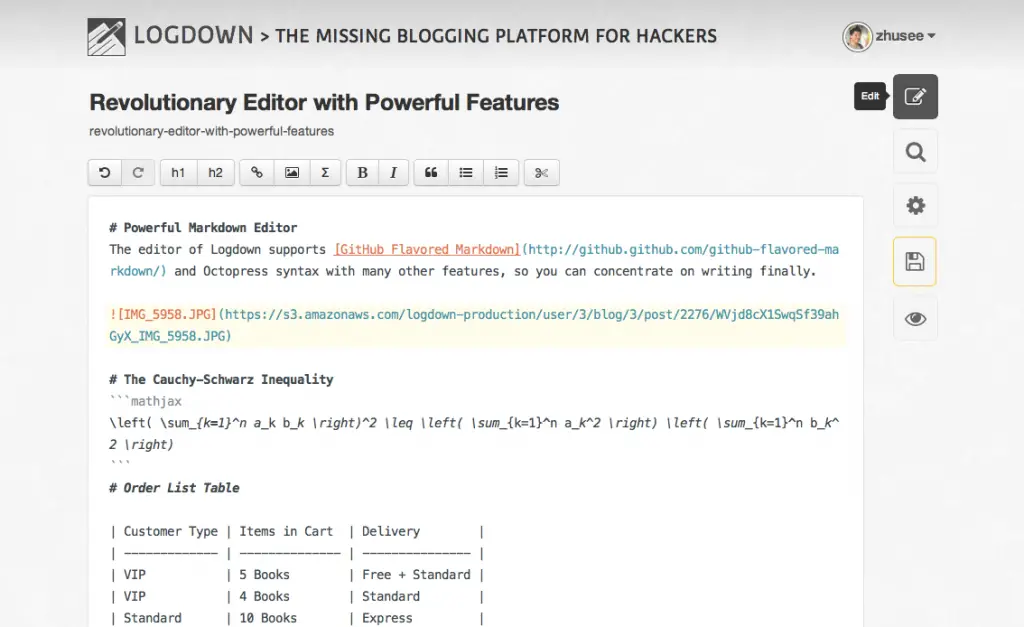Are you having doubts about which blogging platform suits your academic needs? Unravel the answers in the Best Academic Blogging Platforms roundup.
Swift and effective dissemination of knowledge remains paramount in academia. While traditional publishing avenues hold their merits, they often struggle with time-consuming processes. This causes potential delays in sharing crucial research findings.
Blogging presents a dynamic solution, giving scholars and researchers a modern platform to articulate their insights, discuss novel findings, and collaborate in real-time.
Table of Contents
Overview
The surge in blogging platforms has dramatically reshaped academic communication. Scholars and educators are now equipped with tools that empower them to convey intricate insights, expand their outreach, and facilitate robust discussions.
With an abundance of options at our fingertips, the challenge arises in selecting the right blogging platform for your academic aspirations. To guide this journey, let’s unravel a comprehensive list of the best blogging platforms optimized for academic requirements.
Best Academic Blogging Platforms
#1. WordPress: Best for versatile and customizable blogging
Summary
- Highly customizable
- Extensive plugin ecosystem
- SEO friendly
WordPress is a mainstay in the blogging realm, renowned for adaptability. Academics can benefit immensely as it offers unparalleled customization, adapting to varied scholarly requirements.
This popular blogging platform is ideal for both the tech-savvy and the beginner.
What are the benefits of WordPress?
- Endless Customization For You: With WordPress, mold your blog’s appearance and functionality to mirror your unique vision.
- Your Ideal Plugin Library: Access a vast array of plugins tailored to academic needs.
- Boosted Visibility with SEO Mastery: Ensure your academic work stands out and reaches a broader audience with WordPress’s SEO-centric tools and features.
WordPress provides a blend of power and adaptability. Its robustness ensures that every scholarly nuance is captured, delivering a tailored blogging journey befitting academic insights and discoveries.
How much does it cost?
- $48-$25,000 per year
Source: https://wordpress.com
#2. Blogger: Best for straightforward blogging with Google integration
Summary
- User-centric interface
- Google tools harmony
- Free, reliable hosting
Blogger, birthed by Google, simplifies the blogging experience. Scholars who appreciate directness will cherish Blogger’s straightforward approach.
Its strength lies in offering simplicity without compromising on features. The Google integration ensures that your academic content is seamlessly integrated with a suite of powerful tools. This makes content management and dissemination smooth and effortless.
What are the benefits of Blogger?
- Swift Setup: Quickly transition from idea to live blog with Blogger’s straightforward process.
- Google Synchronization: Seamlessly connect your blog with other Google services, making content management simpler.
- Cost-Free Hosting: Enjoy reliable, free hosting on Google’s robust infrastructure, eliminating additional costs and technical hassles.
Blogger’s charm is its uncomplicated nature. It strips away the extraneous, allowing academic content to take center stage. For those seeking a straightforward, yet powerful platform, Blogger’s harmony with Google’s tools makes it a standout choice.
How much does it cost?
- Free
Source: https://www.blogger.com
#3. Medium: Best for blogging with an established readership
Summary
- Built-in audience base
- Distraction-free reading
- Earning opportunities
Medium stands as a beacon for content creators. It offers scholars a space where their work is published and also celebrated.
With a design that prioritizes reading and an existing audience eager for quality content, academics can effortlessly find and engage with a readership that appreciates and resonates with deep, insightful writings.
What are the benefits of Medium?
- Engage Immediately: With Medium, you access an existing audience.
- Clean Interface: This blogging platform offers an interface focussed on pure content.
- Monetization: You can also benefit from Medium’s Partner Program.
Medium is a sanctum for scholarly content, where depth meets an eager audience. Academics can relish the platform’s commitment to content purity and its vibrant community. This makes it an optimal space for academic revelations and dialogues.
How much does it cost?
- $0-$5 per month
Source: https://medium.com
#4. Edublogs: Best for educational and classroom-focused academic blogs
Summary
- Tailored for educators
- Classroom-centric tools
- Safe & secure for students
Edublogs is designed specifically with educators and students in mind. This platform presents a specialized platform to communicate, collaborate, and share.
Edublogs offers tools that cater specifically to classroom dynamics, enabling educators to create a virtual extension of their teaching environment. It’s more than a blog; it’s a digital classroom community.
What are the benefits of Edublogs?
- Classroom Tools: Engage students with dynamic features.
- Educator Community: Allows you to connect with peers worldwide.
- Safe Environment: Edublogs prioritizes student safety and data protection.
Edublogs bridges the gap between classrooms and the digital realm. If you are desiring a tailored blogging environment that mirrors classroom dynamics, Edublogs emerges as the clear choice.
How much does it cost?
- $39.95 per year
Source: https://edublogs.org
#5. Tumblr: Best for microblogging and multimedia posts
Summary
- Multimedia rich
- Blends with social media platforms
- Quick content sharing
Tumblr is the vibrant intersection of a blogging and social media platform. It’s an ideal platform for scholars looking to share shorter, visually compelling posts.
From GIFs to short essays, Tumblr’s dynamic environment supports a myriad of content formats. Its quick-paced, social nature makes it an exciting avenue for academics keen on reaching a diverse, global audience with bite-sized insights.
What are the benefits of Tumblr?
- Versatile Posts: Share text, photos, GIFs, and more.
- Social Interactions: Engage directly with your audience.
- Integrated Community: Connect with like-minded individuals.
Tumblr brings dynamism to academic blogging. For those wanting to break the traditional mold and explore a mix of content in an interactive setting, Tumblr provides a lively and engaging platform that resonates with the digital generation.
How much does it cost?
- Free
Source: https://www.tumblr.com
#6. Wix: Best for visually appealing blogs with drag-and-drop design
Summary
- Intuitive design tools
- Array of stunning templates
- Fully customizable
Wix stands as a testament to the blend of beauty and functionality. If you are wishing to present your content in a visually arresting manner without delving into the intricacies of web design, Wix is a haven.
With a vast array of design options and simple drag-and-drop functionality, it guarantees an aesthetically pleasing blog, no matter the topic.
What are the benefits of Wix?
- Easy Creation: allows you to build with no coding knowledge.
- Visual Array: you can choose from diverse design templates.
- Full Control: Tailor every element to your liking.
Wix offers scholars the tools to craft a visual masterpiece. Its emphasis on aesthetics, combined with ease of use, ensures that every piece of academic content is not just communicated, but also presented in a memorable, captivating manner.
How much does it cost?
- $16-$45 per month
Source: https://www.wix.com
#7. Weebly: Best for creating blogs with an intuitive interface
Summary
- User-friendly drag & drop builder
- Comprehensive e-commerce tools
- Customizable templates
Weebly champions user-centric design. Geared towards those unfamiliar with the intricacies of web development, Weebly offers academics a hassle-free approach to blogging.
Whether discussing recent academic research or setting up an online course platform, Weebly’s intuitive tools enable even the least tech-savvy individual to craft and manage an elegant blog with minimal effort.
While Weebly is not a primary blogging platform, it helps academics set up blogs to share their insights.
What are the benefits of Weebly?
- Simple Creation: Fashion a site in minutes.
- E-commerce Ready: Offer courses or materials seamlessly.
- Tailored Designs: Find a look that suits your academic style.
Weebly’s strength lies in its approachability. Its suite of tools guarantees that academic brilliance shines without the shadow of technical complexities. Perfect for scholars desiring simplicity.
How much does it cost?
- $144 per year
Source: https://www.weebly.com
#8. Typepad: Best for traditional blogging with established tools
Summary
- Time-tested platform
- Robust analytics
- Monetization options
Embracing tradition, Typepad heads back to the roots of blogging, providing a stable, familiar environment. Its longevity speaks to its reliability. Academics can trust in its time-tested tools, harnessing them to share doctoral writing, discuss theories, or engage with peers.
With comprehensive analytics, it also gives valuable insights into readership, ensuring content meets its desired audience.
What are the benefits of Typepad?
- Steady Framework: Lean on its established reputation.
- Reader Insights: Understand and cater to your audience.
- Earn From Content: Multiple monetization pathways.
Typepad offers academics a reliable and established haven. For those who value stability, familiarity, and in-depth insights into their readership, this platform proves itself as a sturdy pillar in the ever-evolving world of blogging.
How much does it cost?
- $8.95-$49.95 per month
Source: https://www.typepad.com
#9. Ghost: Best for clean, streamlined blogging
Summary
- Minimalist design focus
- SEO optimized out-of-the-box
- Fast, modern infrastructure
Ghost simplifies the blogging narrative. Its minimalist ethos ensures content remains the hero. Academics, particularly those who desire their work to shine without ornamental distractions, will appreciate Ghost’s straightforward approach.
With speed and SEO efficiency built-in, it guarantees research and essays load swiftly, reaching audiences effectively.
What are the benefits of Ghost?
- Content-First: Prioritize substance over flash.
- Optimized Delivery: Boost visibility effortlessly.
- Swift Performance: Engage readers with speed.
Ghost is the quintessential platform for academics valuing content purity. By prioritizing content and offering swift, efficient delivery, Ghost ensures academic voices are heard, loud and clear.
How much does it cost?
- Free
Source: https://ghost.org
#10. Movable Type: Best for blogs requiring scalability and security
Summary
- Enterprise-grade platform
- Strong emphasis on security
- Built for growth and adaptability
Movable Type stands as a fortress in the blogging realm. For academics and institutions that prioritize data security while aiming for expansion, this platform is top-tier.
It’s structured to handle growing traffic, diverse content forms, and offers a bedrock of security measures ensuring research, discussions, and data remain uncompromised.
What are the benefits of Movable Type?
- Reliable Framework: Built for performance and stability.
- Tight Security: Protect sensitive academic content.
- Future-Ready: Scales according to your growth.
For institutions and researchers, Movable Type is a beacon of security and scalability. When academic content requires both expansion room and a shield against threats, Movable Type stands tall.
How much does it cost?
- $499 per year
Source: https://www.movabletype.org
#11. HubPages: Best for community-driven article-based blogs
Summary
- Community-focused publishing
- Earnings through ad programs
- Diverse range of topics
HubPages functions as a community of writers and readers. For academics keen on disseminating knowledge in an interactive ecosystem, this platform is ideal.
It’s not just about publishing; it’s about engaging with a readership that spans diverse interests. Plus, with integrated ad programs, scholars can potentially earn from their contributions.
What are the benefits of HubPages?
- Interactive Audience: Engage in rich discussions.
- Monetization Options: Generate revenue from articles.
- Broad Spectrum: Connect across varied academic fields.
HubPages is an academia meeting community. It merges scholarly pursuits with dynamic reader interactions, proving invaluable for those craving feedback, discussions, and a touch of earnings on the side.
How much does it cost?
- Free
Source: https://discover.hubpages.com
#12. Postach.io: Best for blogging directly from Evernote
Summary
- Evernote integration
- Simplified content publishing
- Versatile theming options
Postach.io is where Evernote notes transform into public posts. For scholars who organize their thoughts, research, or lecture notes in Evernote, this platform streamlines the publishing process.
With a few clicks, your Evernote content becomes a blog post. The simplicity is its genius, especially for academics who prefer consolidating tools and maximizing efficiency.
What are the benefits of Postach.io?
- Effortless Transition: Turn notes into blogs seamlessly.
- Unified System: Manage content without juggling apps.
- Custom Looks: Ensure your blog reflects your style.
Postach.io redefines ease for Evernote users. By eliminating the divide between note-taking and publishing, it offers academics a smooth, integrated experience. It’s efficiency, reimagined.
How much does it cost?
- Starts at $5 per month
Source: https://postach.io
#13. LiveJournal: Best for personal and community-engaged blogs
Summary
- Rich history of community engagement
- User-centric discussions
- Personal diary-style platform
LiveJournal, one of the earliest blogging platforms, fosters deep community connections. Ideal for academics wishing to blend personal reflections with their professional insights, it offers a diary-like ambiance.
While sharing research and observations, scholars can engage in rewarding discussions, benefiting from the platform’s longstanding tradition of building tight-knit communities around shared interests.
What are the benefits of LiveJournal?
- Community Roots: With Live journal, you can dive into engaged readerships.
- Personal Touch: Blend professional with personal.
- Rich Discussions: Facilitate academic conversations.
For those seeking a confluence of personal touches and academic dialogues, LiveJournal strikes the right chord. It’s more than a blog; it’s a communal academic journey.
How much does it cost?
- $25 per year
Source: https://www.livejournal.com
#14. Svbtle: Best for minimalist and focused blogging
Summary
- Clutter-free design
- Focus on content
- Elegant simplicity
Svbtle promises undistracted writing and reading experiences. With its minimalist design, it pushes content to the forefront, offering an oasis to academics weary of flashy distractions.
Here, scholars find a sanctuary where their writings remain the focal point, allowing research, ideas, and arguments to shine brilliantly against a backdrop of elegant simplicity.
What are the benefits of Svbtle?
- Unadulterated Writing: Pure focus on content.
- Elegant Minimalism: Less is truly more.
- Reader Comfort: Delight in distraction-free reading.
In a world bursting with excesses, Svbtle stands apart, valuing the essence of academic writing. Here, content doesn’t just speak; it resonates.
How much does it cost?
- $7 per month
Source: https://svbtle.com
#15. Silvrback: Best for distraction-free blogging with a sleek design
Summary
- Intuitive interface
- Striking yet simple design
- Tailored for writers
Silvrback caters to those who champion clarity in design and content. Marrying sleek aesthetics with a distraction-free environment, it is the go-to for academics who wish to present their work in a polished, reader-friendly space.
Every design element underscores the written word, making it a favored choice for scholars seeking an equilibrium between beauty and functionality.
What are the benefits of Silverback?
- Focused Environment: Let your content be the star.
- Sophisticated Design: Complement your writings.
- Writer’s Paradise: Tailored for undistracted creation.
Silvrback is where design meets academic clarity. A perfect harmony of aesthetics and purpose, this platform becomes an ally for scholars craving pristine, undisturbed writing realms.
How much does it cost?
- $3.99 per month
Source: https://www.silvrback.com
#16. Write.as: Best for no-frills, privacy-centric blogging
Summary
- Prioritizes user privacy
- Minimalistic design
- Ad-free platform
Write.as is the haven for those who value privacy and simplicity in equal measure. Tailored for academics who prefer their research and thoughts to be in a distraction-free space, this platform offers a stripped-back, pure writing experience.
With a strong commitment to user privacy, it ensures that content remains untainted by ads or tracking scripts.
What are the benefits of Write.as?
- Utmost Privacy: Your data remains yours.
- Uncluttered Design: Pure focus on your writings.
- No Ad Distractions: Readers engage solely with content.
Write.as emerges as the embodiment of simplicity and privacy. For scholars seeking serenity in the digital age, it offers a tranquil academic sanctuary.
How much does it cost?
- $12 per month
Source: https://write.as
#17. Journo Portfolio: Best for bloggers showcasing diverse writings
Summary
- Portfolio-centric platform
- Showcases varied writings
- Customizable layouts
Journo Portfolio is crafted for academics and writers who juggle diverse writings. Its portfolio structure allows scholars to curate their best works under distinct sections, offering readers a comprehensive view.
With the flexibility to customize layouts, it becomes a personal canvas to display academic accomplishments and writings in a visually compelling manner.
What are the benefits of Journo Portfolio?
- Structured Display: Organize your achievements.
- Versatile Showcase: Adapt to varied writings.
- Personal Branding: Make your mark distinctly.
Journo Portfolio is a mosaic of academic accomplishments. It’s not merely a blogging platform, but a gallery where each writing piece finds its rightful place.
How much does it cost?
- $0-$10 per month
Source: https://www.journoportfolio.com
#18. Blot.im: Best for simple blogging using file-based content
Summary
- File-driven blogging
- No interface, just folders
- Drop-and-publish simplicity
Blot.im offers a revolutionary approach to blogging: No dashboards, no interfaces, just files. Ideal for academics who enjoy organizing work in folders, this platform transforms those files into blogs.
Whether it’s a PDF of research findings or a Word document of reflections, Blot.im publishes it seamlessly, making the transition from file to blog effortless.
What are the benefits of Blot.im?
- Organizational Ease: Use your favorite file system.
- Simplified Publishing: No learning curve.
- Flexible Formats: From text files to images.
Blot.im reimagines blogging through an organizational lens. By marrying traditional file systems with modern publishing, it provides academics with an innovative, yet intuitive platform.
How much does it cost?
- $4 per month
Source: https://blot.im
#19. Substack: Best for creating blogs with a newsletter approach
Summary
- Newsletter-focused blogging
- Monetization opportunities
- Engage directly with readers
Substack offers an intriguing blend of blogging and newsletter formats, enabling academics to keep their readership regularly updated. Its monetization feature can be especially beneficial for researchers and scholars, offering premium content.
By fostering direct connections between writers and readers, it encourages a deeper engagement and facilitates vibrant discourse in the academic community.
What are the benefits of Substack?
- Direct Engagement: Create a loyal readership.
- Monetize Knowledge: Offer premium insights.
- Unified Approach: Blog and newsletter in one.
Substack revitalizes the academic dialogue, bridging the intimacy of newsletters with the depth of blogs. It’s a platform that not only disseminates knowledge but values it.
How much does it cost?
- Free
Source: https://substack.com
#20. Logdown: Best for blogging with markdown support
Summary
- Markdown-centric blogging
- Syntax highlighting for code
- User-friendly interface
Logdown caters predominantly to the tech-savvy academic community. Its markdown support facilitates smooth writing, while syntax highlighting proves invaluable for those sharing code or algorithms.
A blessing for researchers in computational fields, it streamlines the presentation of technical content, ensuring clarity. The platform seamlessly balances the rigors of academic tech writing with an intuitive user experience.
What are the benefits of Logdown?
- Technical Precision: Share code with ease.
- Simplified Writing: Embrace markdown efficiency.
- Engage Tech Readers: Tailored for computational content.
Logdown stands out as the nexus between technology and academia. By catering to the nuances of technical writing, it offers a platform where precision meets elegance.
How much does it cost?
- $49.99 per year
Source: https://logdown.com
Conclusion
In the vast landscape of academic blogging, the right platform can amplify your voice and broaden your reach. We’ve explored many blogging platforms that cater to diverse academic needs, ensuring that every scholar finds their fit.
Remember, the best blogging platform is not just about publishing; it’s about creating impactful conversations. Are you poised to share your academic insights? Pick your preferred platform and embark on a rewarding blogging adventure now!


